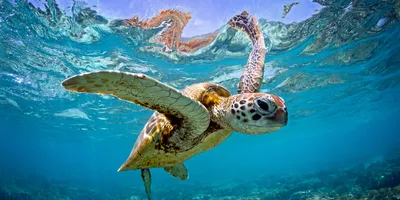Introduction: Illuminating Eastern Pacific Green Turtle Ecology with Advanced Lab Science
The field of marine biology continually seeks innovative methodologies to understand and protect endangered species. Among these, the eastern pacific green turtle (Chelonia mydas agassizii), a genetically distinct population facing significant depletion, presents unique challenges due to its expansive migratory patterns and cryptic life stages. Laboratory professionals play a pivotal role in these endeavors, employing sophisticated analytical techniques to glean unprecedented insights from biological samples. This article delves into the groundbreaking research that has begun to unravel the previously unknown life history of these magnificent reptiles, emphasizing the critical contribution of advanced laboratory technologies in conservation efforts.
Understanding the life history of long-lived, migratory marine species like the eastern pacific green turtle is fundamental for effective conservation strategies. Traditional observational methods often fall short in providing comprehensive data on early life stages and broad-scale habitat use. This knowledge gap hinders the precise identification of critical habitats and the mitigation of anthropogenic threats, such as fisheries bycatch. The integration of novel analytical approaches, particularly those focused on stable isotope analysis and bone micro-architecture, offers a powerful means to reconstruct past movements and dietary shifts, providing a retrospective lens into an individual's environmental history.
Advanced Analytical Techniques for Eastern Pacific Green Turtle Research
Recent pioneering research, spearheaded by biologists from the University of California San Diego and NOAA's National Marine Fisheries Service, has introduced a paradigm shift in our understanding of eastern pacific green turtle ecology. Their innovative approach meticulously analyzed the skeletal structures of deceased turtles found along the Baja California peninsula, leveraging the inherent biological archives within bone tissue. This methodology bypasses the limitations of traditional tagging and tracking studies, offering a robust framework for investigating life history events that occurred years prior to a specimen's collection.
Bone Dating and Isotopic Analysis: Tracking Eastern Pacific Green Turtle Movements
A cornerstone of this research involves a refined technique combining precise bone dating with the sequential sampling of annual growth rings for chemical signatures. Similar to dendrochronology in trees, bone growth rings in turtles record environmental and dietary changes over time. By carefully sectioning and analyzing these rings, scientists can reconstruct an individual's past.
The chemical signatures primarily refer to stable isotope ratios, particularly those of carbon (δ13C) and nitrogen (δ15N). These isotopes act as natural tracers:
- Carbon isotopes (δ13C) reflect the primary production source at the base of the food web, distinguishing between offshore (pelagic) and nearshore (benthic) feeding grounds.
- Nitrogen isotopes (δ15N) indicate trophic level, providing insights into the type of prey consumed.
By analyzing the sequential changes in these isotopic ratios across different growth rings, researchers can pinpoint shifts in habitat use and diet throughout a turtle's life. This provides a temporal resolution to their movements and feeding patterns, offering a chronological biography etched within their bones.
Micro-CT Scanning and Spectroscopy: Enhanced Analysis of Eastern Pacific Green Turtle Bones
Beyond isotopic analysis, the study incorporated highly advanced imaging and elemental analysis techniques, further enhancing the resolution of their findings:
- Micro-Computed Tomography (Micro-CT) Scanning: This non-destructive imaging technique produces high-resolution 3D images of internal bone structures. For skeletal samples, Micro-CT allows researchers to visualize and precisely locate annual growth rings within the bone, ensuring accurate sampling without damaging the integrity of the specimen. It provides a detailed anatomical map, crucial for targeted sampling of specific growth layers.
- Spectroscopy: While not explicitly detailed as a primary analytical tool in the press release, the concept of "chemical signatures" often implies the use of spectroscopic methods. Techniques such as Inductively Coupled Plasma Mass Spectrometry (ICP-MS) or Laser Ablation Inductively Coupled Plasma Mass Spectrometry (LA-ICP-MS) are commonly employed in conjunction with stable isotope analysis. These methods allow for the precise quantification of trace elements within bone tissue. Variations in elemental composition can correlate with environmental factors, providing additional proxies for habitat use or exposure to specific pollutants. The combined application of these sophisticated techniques provides a holistic picture of the physiological and environmental history embedded within the skeletal matrix.
Key Findings: Eastern Pacific Green Turtle Habitat Use and Life Stages
The rigorous analysis of bone samples yielded previously unknown and critical information regarding the early life stages and subsequent habitat use of the eastern pacific green turtle. This research sheds light on a significant developmental period that has historically been difficult to observe directly.
The data unequivocally revealed a distinct biphasic life history pattern:
- Oceanic Juvenile Phase: The turtles spend approximately three to five years as juveniles in the open ocean. This pelagic phase, characterized by dispersed feeding across vast marine environments, is a critical period of growth and development that was previously poorly understood.
- Nearshore Settlement: Following this oceanic phase, the turtles transition to nearshore habitats, where they settle into more resident feeding grounds. This shift marks a significant ecological transition and highlights the importance of coastal ecosystems for their long-term survival.
"These data allowed us to determine the age that individual turtles transition from an oceanic habitat to nearshore habitats," stated lead authors Cali Turner Tomaszewicz (University of California San Diego) and Jeffrey Seminoff (NOAA's National Marine Fisheries Service).
To further illustrate the utility of these techniques, consider the following applications:
Analytical Technique | Primary Application in Study | Key Insight Provided |
|---|---|---|
Bone Dating | Age determination and chronological sampling points | Established the timeline for habitat transitions. |
Carbon Isotope Analysis | Distinguishing oceanic vs. nearshore feeding environments | Confirmed early oceanic phase and later nearshore settlement. |
Nitrogen Isotope Analysis | Trophic level assessment and dietary shifts | Indicated changes in food sources associated with habitat shifts. |
Micro-CT Scanning | High-resolution visualization of growth rings | Enabled precise and non-destructive sampling of bone layers. |
Spectroscopy (Implied) | Elemental composition and additional chemical signatures | Potential for identifying exposure to specific environments or stressors. |
The research further revealed that a substantial portion of these turtles, following their nearshore settlement, spend most of their time feeding in the offshore waters of the Gulf of Ulloa. This specific area, a known hotspot for upwelling and high productivity, is unfortunately also a region where these turtles are at significant risk of being caught in nets from fishing boats. This finding has profound implications for conservation efforts, directly linking a vital foraging ground to a major anthropogenic threat.
Advanced Lab Management Certificate
The Advanced Lab Management certificate is more than training—it’s a professional advantage.
Gain critical skills and IACET-approved CEUs that make a measurable difference.
Implications for Eastern Pacific Green Turtle Conservation and Future Research
The insights gained from this study are invaluable for refining conservation strategies for the eastern pacific green turtle. By identifying critical developmental stages and specific high-risk foraging areas, conservationists can target interventions more effectively. For laboratory professionals, this research underscores the power of integrating diverse analytical platforms to address complex ecological questions.
The methodologies employed in this study — combining advanced imaging, precise isotopic analysis, and meticulous sample preparation — set a new benchmark for studying the life histories of cryptic or endangered species. These approaches can be broadly applied to other long-lived marine animals, offering a robust framework for:
- Identifying previously unknown critical habitats for marine turtles: Pinpointing areas essential for specific life stages.
- Quantifying the timing of life history transitions in eastern pacific green turtles: Understanding when and why animals move between different environments.
- Assessing exposure to environmental stressors in sea turtle populations: Using chemical signatures to detect pollutants or other anthropogenic impacts.
- Informing fisheries management for sea turtle protection: Providing data to minimize bycatch in high-risk areas.
The continued development and application of such cutting-edge laboratory techniques are paramount. This study not only provides crucial information about the eastern pacific green turtle but also highlights the essential role of interdisciplinary collaboration between field biologists and analytical chemists in advancing ecological understanding and promoting effective wildlife conservation in the face of escalating global threats.
Frequently Asked Questions (FAQ) about Eastern Pacific Green Turtles
Q1: What unique technologies were used to study the eastern pacific green turtle?
A1: Researchers used a combination of advanced techniques including bone dating, sequential stable isotope analysis (δ13C and δ15N) of annual growth rings, and Micro-CT scanning to precisely map the turtles' life history within their skeletal records.
Q2: What major life history discovery was made about these eastern pacific green turtles?
A2: The study revealed that eastern pacific green turtles spend their first three to five years as juveniles in the open ocean (pelagic phase) before transitioning and settling into nearshore habitats for feeding.
Q3: How do stable isotopes help track eastern pacific green turtle movements?
A3: Stable carbon isotopes (δ13C) differentiate between offshore and nearshore feeding grounds, while stable nitrogen isotopes (δ15N) indicate changes in the turtles' trophic level and diet, providing a retrospective account of their movements and foraging ecology.
Q4: What is the primary conservation implication of this eastern pacific green turtle research?
A4: The research identifies the Gulf of Ulloa as a critical nearshore foraging ground where eastern pacific green turtles are highly susceptible to fisheries bycatch, allowing for more targeted conservation efforts and risk mitigation strategies in that specific region.













